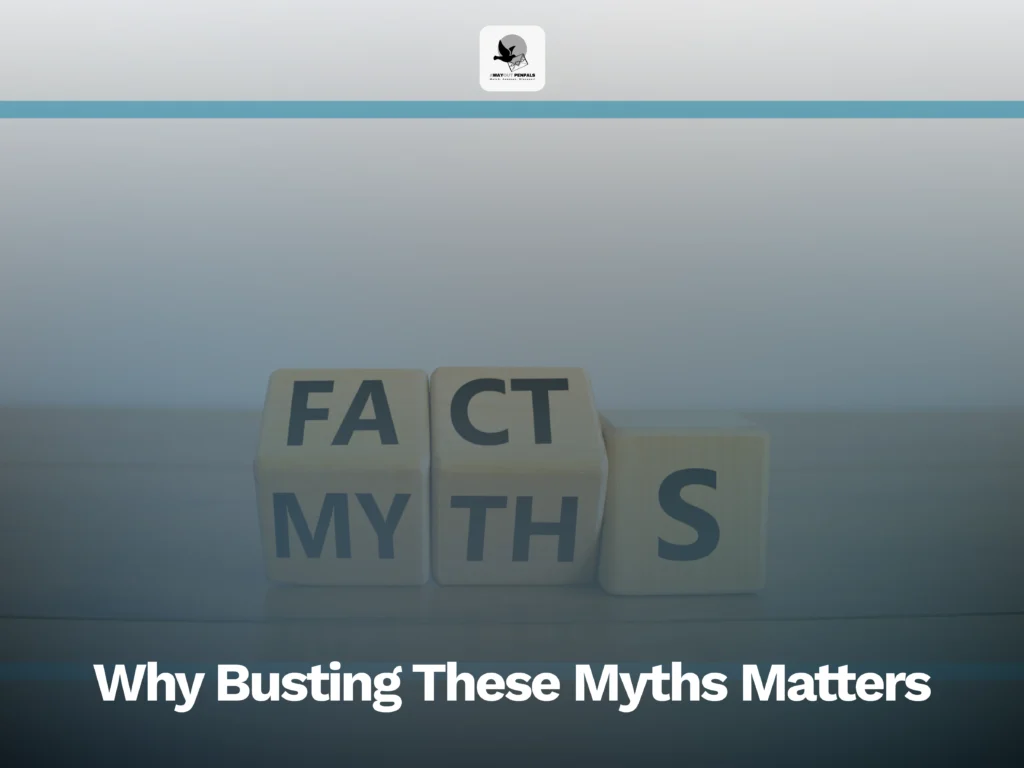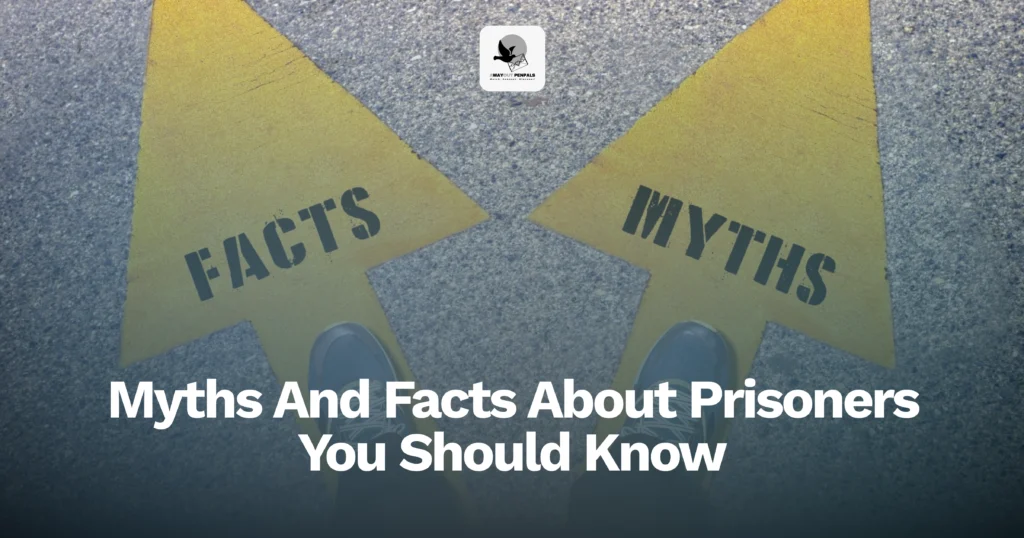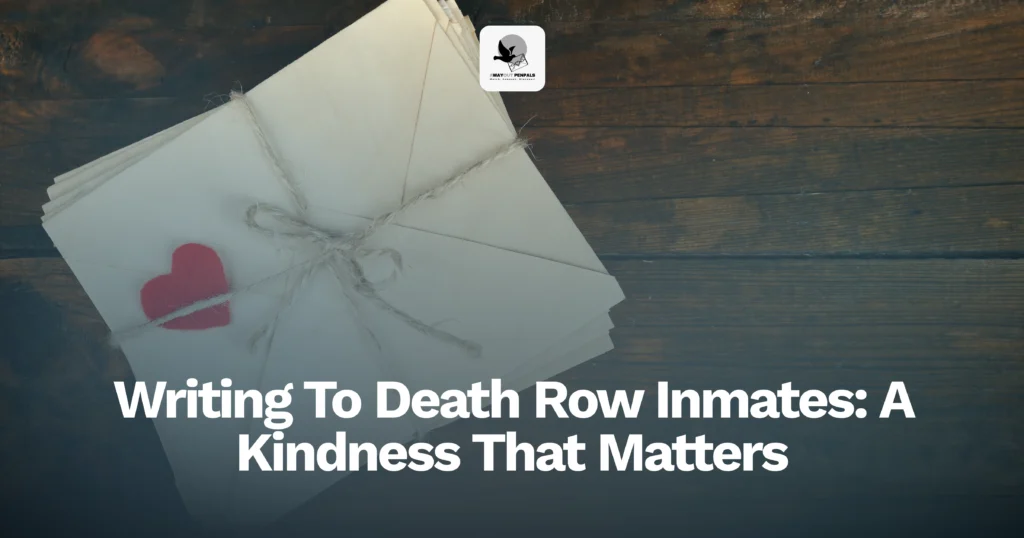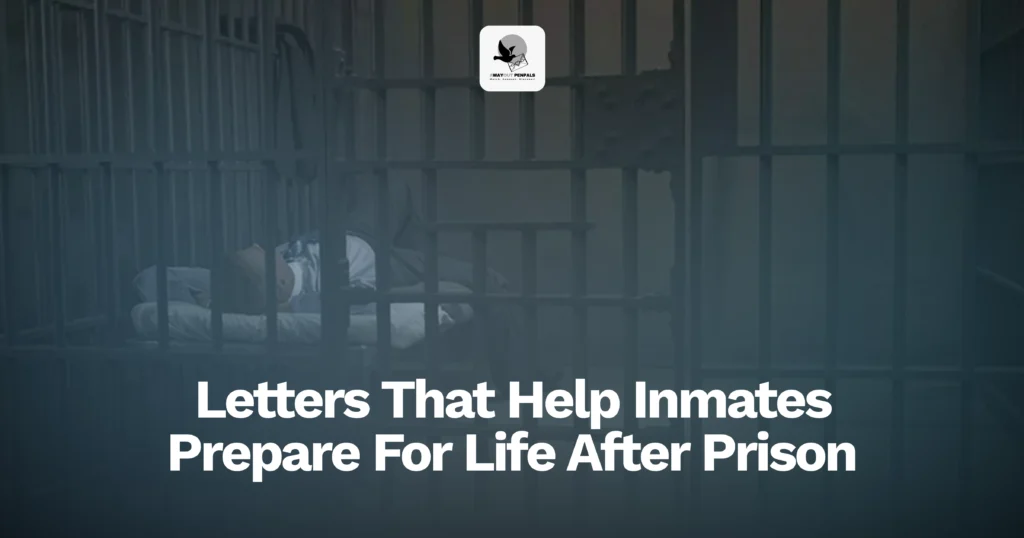When you hear the word “prison,” what comes to mind? Orange jumpsuits, tough guys with tattoos, constant fights, or maybe a dramatic scene from a crime show?
Yeah… Hollywood’s got a lot to answer for.
Here at A Way Out, we connect pen pals with people inside and one thing we’ve learned firsthand? There’s a lot of misinformation out there about prisons and inmates. So today, let’s bust some common myths and facts about prisoners and talk about the real facts about prison and the people inside.
Because hey, if you’re writing letters to someone behind bars or thinking about it, it’s helpful to know what’s true… and what’s just TV drama.
Breaking Down the Myths and Facts About Prisoners

MYTH #1: All Prisoners Are Violent Criminals
FACT: Nope, not even close.
While some people are incarcerated for violent offenses, a large number are inside for non-violent crimes like drug possession, theft, or even just probation violations. In fact, thousands of inmates are locked up simply because they couldn’t afford bail or had a technical parole violation (missed curfew, anyone?).
People in prison aren’t a single type. They’re parents, students, artists, writers, thinkers, just like anyone else. And many are working hard to change their lives.
MYTH #2: Prisoners Get Everything for Free: Meals, Healthcare, Gym Access… Must Be Nice!
FACT: Honestly, this one couldn’t be further from reality.
Sure, basic meals and shelter are provided, but “basic” is doing a lot of heavy lifting here. Prison food is notoriously poor, and access to medical care is minimal at best. If inmates want toothpaste, extra socks, snacks or even paper and stamps to write letters, they often have to buy them from the prison commissary at inflated prices. That’s hard when prison jobs pay pennies per hour.
So no, it’s not a free ride. Not even close.
MYTH #3: Prison Is Full of Uneducated People
FACT: Education levels vary, just like they do outside.
It’s true that some people enter prison with limited schooling, but many use their time to change that. There are people earning GEDs, college degrees, learning trades or even becoming published writers from behind bars. Yes, seriously, some are more well-read than folks on the outside.
When you connect with a pen pal, you might be surprised by how thoughtful, insightful, and informed they are. Never underestimate someone just because they’re incarcerated.
MYTH #4: Once a Criminal, Always a Criminal
FACT: People change. People grow. And yes, people can absolutely turn their lives around.
Many inmates regret their past deeply and are actively trying to make amends and create better futures. Connecting with someone through a letter may be the encouragement they need to keep going.
Think about it: how would your life look if every bad decision you ever made was frozen in time and used to define you forever?
MYTH #5: Writing to a Prisoner Is Weird/Dangerous
FACT: It’s actually one of the kindest things you can do.
Loneliness is one of the biggest issues in prison. Many inmates have lost contact with friends and family or never had strong support systems to begin with. A simple letter can mean everything. It gives them hope, connection, and something to look forward to.
You don’t need to fix their lives or have all the answers. Just being a consistent, caring voice makes a difference.
Why Busting These Myths Matters

When we buy into harmful stereotypes, it’s easy to dehumanize people in prison. But when we take time to learn the truth to see the human behind the label, we open the door to empathy, healing, and second chances.
And isn’t that what A Way Out Pen Pals is all about?
If you’ve ever been curious about writing to an inmate but held back because of fear or judgment, maybe this post is your sign to give it a shot. You might just find a meaningful connection in the most unexpected place.
We hope this helped you see through some of the most common myths and facts about prisoners.
Final Thought
Want to learn more myths and facts about prisoners? Thinking about becoming a pen pal, but still unsure? Let us know in the comments or check out our Getting Started Guide for tips, safety guidelines, and stories from other writers..
Because when we challenge the myths, we open space for real human connection.
FAQs
1. Is it safe to write to someone in prison?
Yes, especially when using a trusted service like A Way Out Pen Pals. Your real address can be kept private, and you set the boundaries. Many pen pals have deeply fulfilling, respectful friendships with their correspondents.
2. What do I even write in my first letter?
Start simple! Introduce yourself, share a bit about your hobbies or day-to-day life, and ask open-ended questions. Avoid heavy or personal topics right away. Think of it like writing to a new friend; you’ll build trust over time.
3. What if the person I write to has committed a serious crime?
That’s your personal choice. Remember, writing to someone isn’t condoning their actions—it’s offering compassion and human connection. Many inmates are working hard to grow and heal. Your letters could be a part of that journey.
4. Can inmates really change?
Absolutely. Not everyone does, but many use their time inside to reflect, learn and rebuild. People are not defined by the worst thing they’ve ever done. Sometimes, just being seen and heard helps them stay on the right path.
5. Do prisoners even care about receiving letters?
YES. For many inmates, mail call is the highlight of their week. A single letter can lift someone out of a dark day. Just knowing someone on the outside sees them as a human being means everything even more so when we start learning the myths and facts about prisoners.






